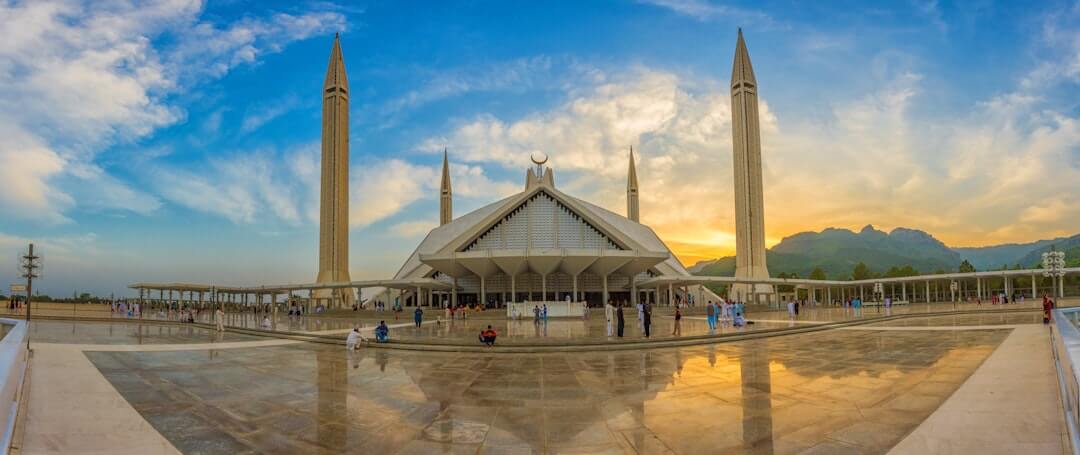Introduction
South Asia’s political landscape is a mosaic of volatility, with Pakistan navigating a perfect storm of judicial theatrics, social media disillusionment, and geopolitical recalibrations. The Pakistan Tehreek-e-Insaf (PTI), once a populist juggernaut under Imran Khan, now teeters on irrelevance, its narrative drowned by institutional resistance and its own strategic blunders. Meanwhile, regional dynamics, from Afghanistan’s tentative détente with Islamabad to Turkey’s anti-Erdogan uprising, reflect a world where old alliances fracture and new pragmatism emerges. This article dissects PTI’s unravelling, the military’s unyielding dominance, and how global shifts are reshaping Pakistan’s future.
Table of Contents
PTI’s Shrinking Political Playbook: From Terrorism to Triviality
PTI’s political strategy has devolved into a binary focus: exploiting terrorism or manufacturing outrage over trivialities. When major attacks rocked Khyber Pakhtunkhwa (KP) or Balochistan, PTI weaponized these tragedies to accuse rivals of incompetence. However, a recent lull in large-scale terrorism has left the party adrift. With no security crises to sensationalize, PTI has resorted to absurd critiques, obsessing over Maryam Nawaz’s fashion choices or staging protests over a cameraman’s positioning during press briefings.
This shift underscores PTI’s existential crisis. Having lost its governance platform after the 2022 no-confidence vote, the party clings to fearmongering and petty theatrics. The irony? The state’s recent counterterrorism successes in KP and Balochistan, attributed to military operations, have deprived PTI of its default narrative. While sporadic small-scale attacks persist, the absence of headline-grabbing violence has exposed PTI’s inability to pivot to policy-driven politics. The result is a base growing restless and a public increasingly dismissive of its antics.
Judicial “Relief” for Imran Khan: A Mirage of Freedom
The Islamabad High Court’s (IHC) decision to grant Imran Khan two weekly jail meetings, up from one, was spun by PTI as a triumph. In reality, the ruling is a masterclass in controlled suppression. The court allowed meetings but banned political discourse during or after them, a paradoxical order that reveals the establishment’s playbook: Let Khan breathe, but gag his voice.
Legally, the restrictions are unenforceable. Pakistan’s Constitution guarantees freedom of speech, and visitors cannot be barred from discussing politics outside jail premises. PTI’s Salman Akram Raja openly mocked the order, declaring, “We’ll hold press conferences a mile away from the jail if needed.” Yet, the state’s message is clear: Khan’s influence must be contained. By limiting his access to allies and media, the establishment aims to sever his connection with the public, a tactic reminiscent of how Zulfikar Bhutto and Nawaz Sharif were politically neutered during their incarcerations.
The deeper truth? Khan’s meetings, even restricted, risk reigniting the anti-establishment fervor that propelled him to power. His ability to coordinate with lawyers and allies, however minimally, keeps PTI’s skeleton structure intact. But with the military determined to sideline him, this “relief” is less about justice and more about managing optics.
Social Media Activism: PTI’s Paper Tiger
PTI’s social media dominance is legendary. With over 10 million followers across platforms and a troll army that trends hashtags like clockwork, the party rewrote Pakistan’s political playbook. Yet, its digital prowess has become a crutch, loud online, lifeless offline.
The 23rd March Debacle: A Case Study
PTI’s call for nationwide protests on Pakistan Day (23rd March 2024) was billed as a “revolution.” Social media buzzed with claims of “millions ready to march.” Reality? Fewer than 1,000 supporters rallied nationwide. In Lahore—PTI’s stronghold—a “massive” protest involved 60 people and 15 motorcycles. The disconnect between virtual hype and physical apathy underscores a critical flaw: PTI conflates retweets with revolution.
The Global Myth of Digital Revolutions
From Egypt’s Arab Spring to Myanmar’s Saffron Revolution, social media’s role in uprisings is often romanticized. In truth, offline mobilization hinges on grassroots networks, trust, and tangible risks—elements PTI lacks. The party’s reliance on bots and hyperbole (e.g., falsely alleging “5,000 arrests” before protests) has eroded credibility. When followers realize tweets don’t translate to protection from state backlash, they retreat to keyboards.
The Military’s Digital Counterinsurgency
Pakistan’s establishment has adapted deftly. During PTI’s rallies, internet throttling, VPN blocks, and platform-specific censorship (e.g., X/Twitter shutdowns) disrupt coordination. Meanwhile, pro-military accounts flood timelines with counter-narratives. PTI’s digital “tsunami” now resembles a ripple in a controlled pond.
Geopolitical Tremors: Afghanistan, Turkey, and Regional Reconfigurations
Afghanistan: From Foe to Flawed Partner
Pakistan’s relationship with the Taliban-led Afghanistan is thawing, uneasily. After years of cross-border terrorism (notably TTP attacks), Rawalpindi’s pressure has forced Kabul to recalibrate. Recent weeks saw a 60% drop in major attacks in KP and Balochistan, coupled with resumed trade talks. For PTI, this is disastrous. Imran Khan’s narrative of “foreign conspiracies” collapses as Pakistan-Afghan ties stabilize, undermining his victimhood rhetoric.
Yet, this détente is fragile. The Taliban’s internal factions, particularly the Haqqani Network, remain wary of Islamabad. Pakistan’s demand for extraditing TTP leaders risks reigniting tensions. For now, though, the military’s pragmatic outreach has boxed PTI into irrelevance on security discourse.
Turkey: Erdogan’s Struggles Mirror PTI’s Playbook
In Turkey, President Recep Tayyip Erdogan, a Khan ally and populist icon, faces unprecedented protests. Tens of thousands of Turks, led by secularists and youth, demanded economic reforms and democratic rollbacks. Erdogan’s response, doubling down on authoritarianism, mirrors PTI’s refusal to adapt. Both leaders conflate social media popularity with enduring power, failing to grasp that viral hashtags cannot substitute for governance.
For Pakistan, Turkey’s unrest is a cautionary tale. Erdogan’s decline began when institutions (judiciary, military) united against him, a fate PTI now faces. As Ankara’s crises spook investors and destabilize the Lira, Islamabad watches closely, aware that populism’s shelf life is finite.
The Military’s Unambiguous Dominance
Pakistan’s military has always been the polity’s final arbiter, but its stance toward PTI marks a historic shift. Unlike past leaders who faced factional opposition within army ranks (e.g., Nawaz Sharif vs. General Musharraf), Imran Khan confronts institutional consensus.
The May 9 Rubicon
The 2023 riots, where PTI supporters vandalized military installations, crossed a red line. Videos of arson at Lahore’s Corps Commander House and attacks on GHQ were circulated widely within army ranks, cementing Khan’s image as a security threat. For soldiers, the spectacle of civilians desecrating symbols of national honor was unforgivable. The military’s subsequent purge of PTI supporters in media, bureaucracy, and judiciary signals zero tolerance for dissent.
The Foreign Conspiracy Narrative: A Double-Edged Sword
Khan’s claims of a “U.S.-backed regime change” initially resonated, but backfired spectacularly. Leaked audio clips revealed PTI leaders lobbying U.S. officials to block IMF loans, a move perceived as sabotaging Pakistan’s economy. The military, already wary of Khan’s populism, now portrays him as a foreign puppet. This narrative has permeated the rank-and-file, with junior officers reportedly calling Khan a “traitor” in private briefings.
Balochistan: The Military’s Laboratory
Balochistan epitomizes the military’s strategy: crush dissent, co-opt moderates. While major terrorist attacks have declined, enforced disappearances and extrajudicial killings continue. PTI, despite its anti-establishment posturing, has ignored Baloch grievances, a silence that alienates potential allies. The military’s gamble? That Baloch nationalism can be contained through brute force, not dialogue.
Conclusion: PTI’s Sunset and South Asia’s Uncertain Dawn
PTI’s decline is both a symptom and a symbol of South Asia’s shifting dynamics. Imran Khan’s judicial “relief” is a mirage; his social media empire, a hall of mirrors. Meanwhile, Afghanistan’s uneasy pragmatism and Turkey’s turmoil underscore a region in flux.
For Pakistan, stability demands addressing Balochistan’s wounds, curbing military overreach, and rebuilding civic trust. PTI, however, remains trapped in a loop of denial, prioritizing trending topics over tangible organizing. As the military tightens its grip and geopolitics redraws alliances, one lesson echoes: in the age of digital dissent, power still resides in the streets, the barracks, and the cold calculus of realpolitik.
Frequently Asked Questions:
- Why is PTI’s political strategy focused on terrorism and trivial issues?
PTI has struggled to redefine its agenda after losing power. With governance failures and limited policy traction, it resorts to sensationalizing security crises or manufactured outrage to stay relevant. - What does Imran Khan’s “judicial relief” actually mean?
The Islamabad High Court allowed two weekly jail meetings but banned political discourse during or after them—a symbolic gesture that does little to restore Khan’s political agency. - Why did PTI’s social media dominance fail to mobilize protests?
While PTI’s online campaigns generate hype, they lack grassroots organization and trust. Followers hesitate to risk state backlash, exposing the limits of digital activism. - How is Afghanistan’s détente with Pakistan affecting PTI?
Improved Pakistan-Afghan ties undermine PTI’s “foreign conspiracy” narrative, weakening Khan’s victimhood rhetoric and isolating the party geopolitically. - Why is Turkey’s unrest relevant to Pakistan?
Erdogan’s struggles mirror PTI’s reliance on populism over governance. Both highlight how institutional resistance and economic crises erode social media-driven movements. - What role did the May 9 riots play in PTI’s downfall?
The attacks on military installations crossed a red line, unifying the army against PTI. The military now views Khan as a national security threat, not a political rival. - Why has Balochistan’s unrest persisted despite reduced terrorism?
The military’s heavy-handed tactics (enforced disappearances, extrajudicial killings) fuel resentment. PTI’s silence on Baloch grievances further alienates potential allies.
External Resources
- PTI’s Social Media Strategy
- Afghanistan-Pakistan Relations
- Turkey’s Anti-Erdogan Protests
- Military’s Role in Pakistani Politics
- Balochistan’s Human Rights Crisis
- Islamabad High Court’s Ruling on Imran Khan
Internal: News | External: Learn More

